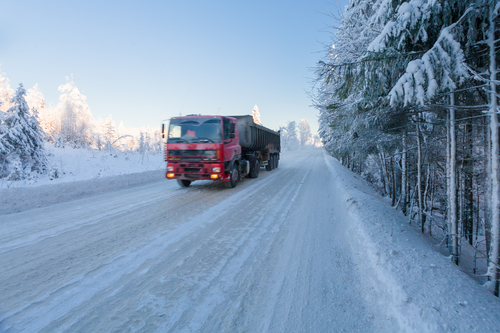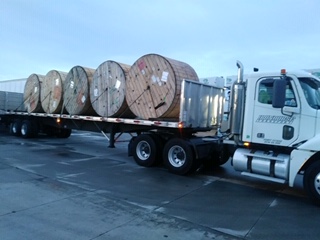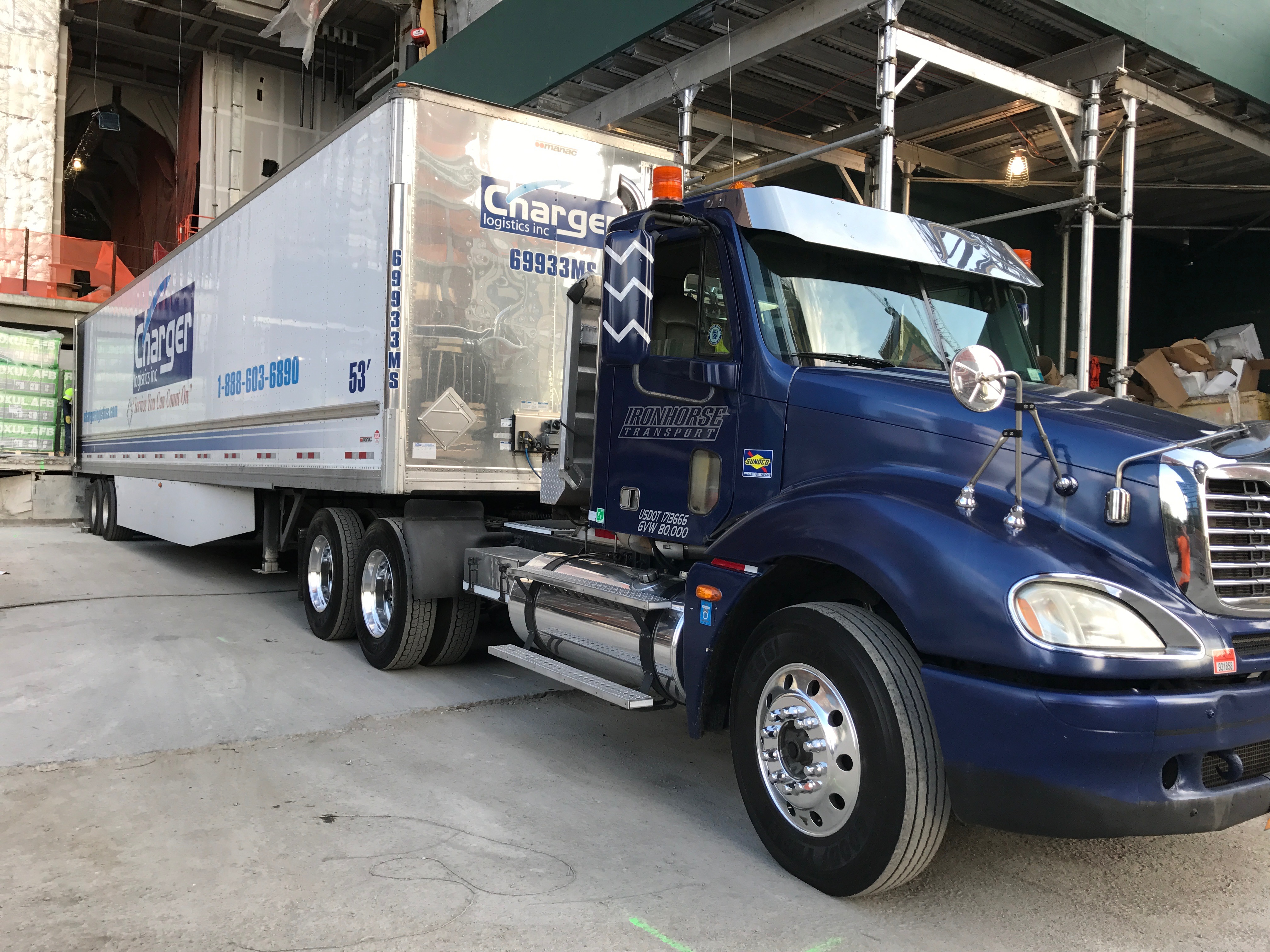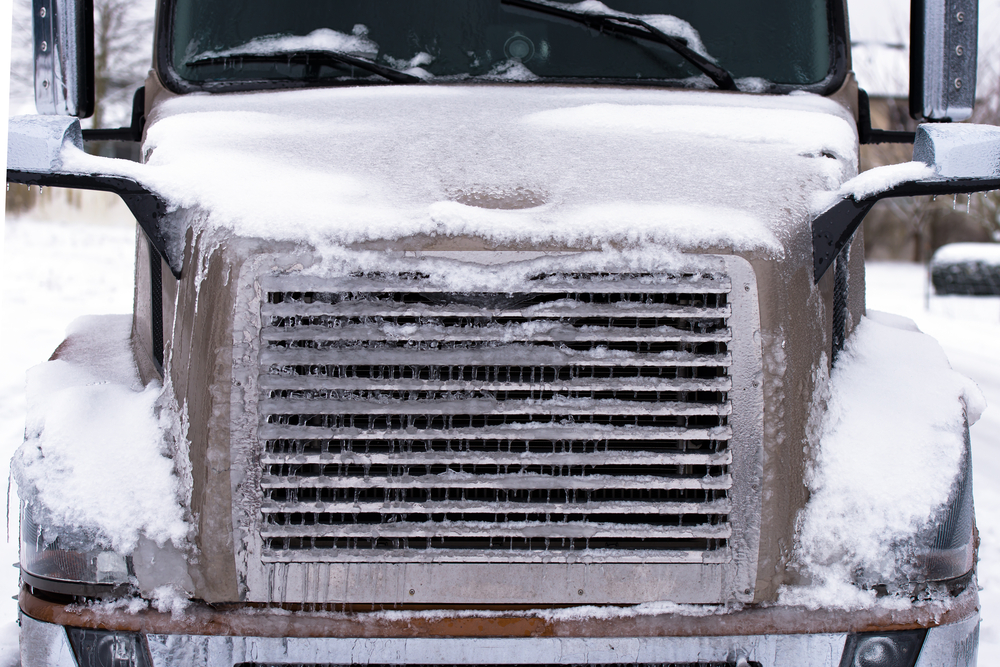
7 Ways We Drive Safely During the Winter
New York can have some very harsh winters. As a matter of fact, this very winter, we’re dealing with frequent snowstorms, bitterly cold temperatures and ice on every surface. Therefore, it’s currently a dangerous time for all drivers. Limited visibility and slippery, unstable conditions are serious challenges. In addition, when inexperienced drivers are on the road, they often overcorrect or exercise caution at the wrong times. These risks are heightened for large trucks hauling heavy, expensive freight.
At Iron Horse Transport, our staff takes these risks into very serious consideration. During the winter, we exercise extreme caution to keep our drivers (and your freight) safe. We understand the implicit risks of trucking in winter weather, and our safety protocols and union trucking insurance are second to none. Read on to learn a few of the ways that our New York trucking company ensures the safety of your freight throughout the winter.
This post has been updated as of February 2021, from its original publication date of January 2018. It has been edited for consistency and for updated information on our services.
1. Slowing Down
Obviously, during the winter, unsafe driving leads to accidents. This can cause serious transit delays. Navigating the streets of New York City during any season presents several unique challenges. It’s difficult when traffic is a constant issue. When there are icy conditions, the speed limit is often too high to guarantee absolute safety. Consequently, our drivers go below the speed limit when necessary. They’ll drive as fast as their sharp judgement and years of professional experience deem appropriate.
While there are many other precautions for safe winter driving, moving slowly and precisely is critical. High speeds increase both the risk and severity of auto accidents. Our drivers minimize this risk by traveling at safe, responsible speeds.
2. Keep a Safe Distance From Other Drivers

During the winter, following close behind another driver is incredibly dangerous. In fact, no driver should do this during any season. This could damage your extremely valuable freight. To prevent this sort of collision and keep your cargo safe and secure, our truck drivers maintain a significant distance from other drivers. This way, in the event of a skid, all parties are safe. During the busy holiday season, this step is even more important.
Our golden rule is to stay away from the leading vehicle’s tail lights. If the tail lights of the car in front of our drivers are visible, they begin to slowly and carefully expand the distance between them.
3. Adjust Schedule As Needed
Very often, meteorologists are able to accurately predict upcoming snowfall or other inclement weather. When this happens, our drivers are able to adjust their schedules in order to permit extra driving time, ensuring prompt final mile delivery, no matter the weather.
However, as we all know, weather predictions can sometimes be inaccurate. In these situations, our NYC truck drivers understand that freight and personal safety — not prompt delivery — are the priority.
4. Never Stop On the Shoulder
The road’s shoulder provides a useful stopping point for drivers with technical difficulties – under normal conditions. For many, it can also seem like a great place to stop in slippery conditions. However, this can be a very dangerous mistake.
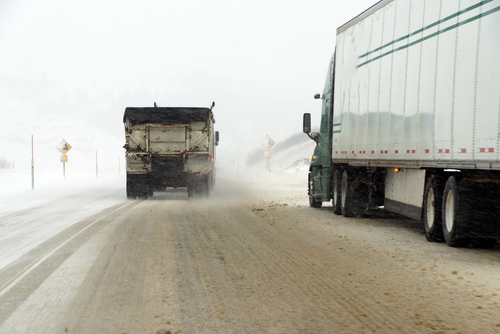
When heavy snowfall impairs visibility, drivers have understandable difficulties distinguishing the lanes. Seeing a truck may lead them to believe that the shoulder is another lane. Because of this, they might drive straight into the truck, greatly damaging the freight. Additionally, parking a truck on the side of the road makes it a likely target for vehicles in oncoming traffic to collide with during a skid.
Our drivers know that stopping on the shoulder of the road is never a good idea. During winter emergencies, if they should no longer be driving, they will always exercise every last effort to locate a roadside truck stop or somewhere similar before the container freight station. For drivers hauling fragile and valuable cargo, this practice is key.
5. Always Gas Up
Gassing up frequently is obviously beneficial in preventing empty gas tanks, and inconvenient breakdowns. However, there are other advantages to frequently adding fuel to the tank. Filling the truck with gasoline helps to ensure that the truck is weighted significantly enough for tire pressure and safe driving.
6. Strategic Braking
Heavy braking is hazardous during winter weather. It can potentially lead to skidding. Even minor skidding can jeopardize freight like construction materials or equipment.
Many drivers engage aggressive driving strategies that require them to switch from the gas to the brake constantly. Good winter truck drivers must take a different approach. Moving at a slow and steady pace is a much safer way to drive.
More than anything, our drivers know that they should avoid the “jake brake”, or the automatic brake, at all costs. Using this brake on an icy road will cause any trucks that are not well-aligned with their trailers to swerve.
7. Ensure Safe Operation of All Systems
Truck maintenance is key to successfully completing routes. Checking the tire pressure, battery, electrical systems, hoses and belts will give you an indication of anything that might disrupt your journey.
However, during the winter, our New York trucking company adds a few key elements to this routine inspection.
We also make doubly certain that the defroster, windshield wipers, and washer fluids are all operating well. By taking these precautions, we ensure that all of our trucks are equipped to deal with poor weather and harsh conditions.
Iron Horse Transport: A New York Trucking Company
At Iron Horse Transport, we make every effort to serve our customers efficiently. Our drivers take the initiative in keeping freight safe from harm. Contact us to learn more about our delivery services.
